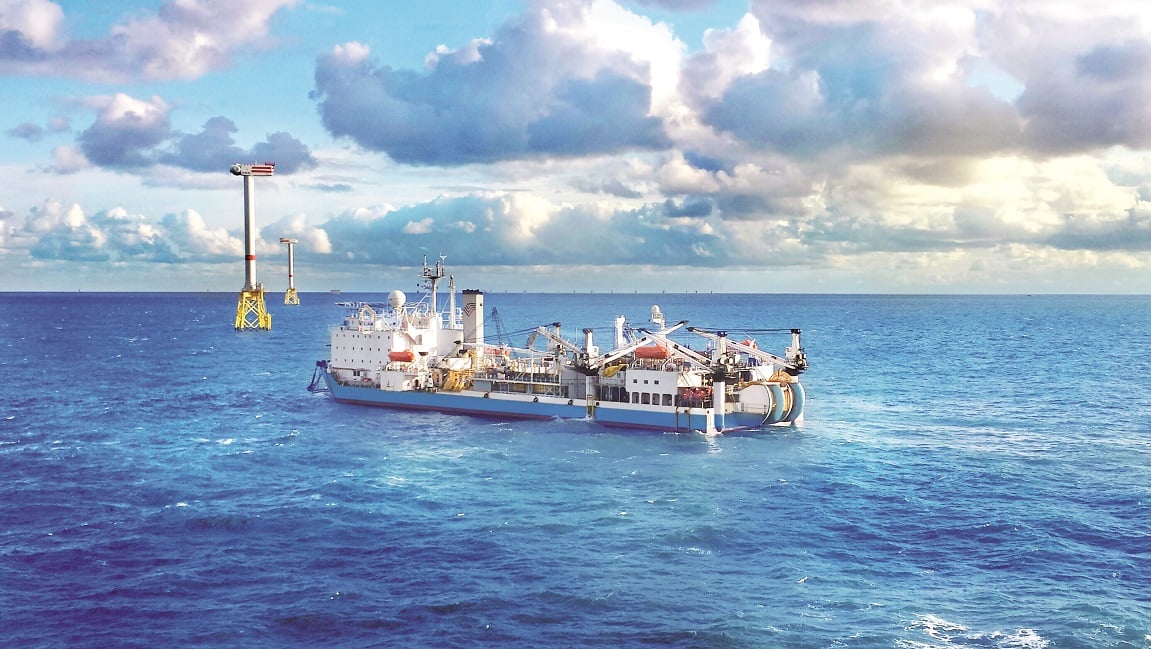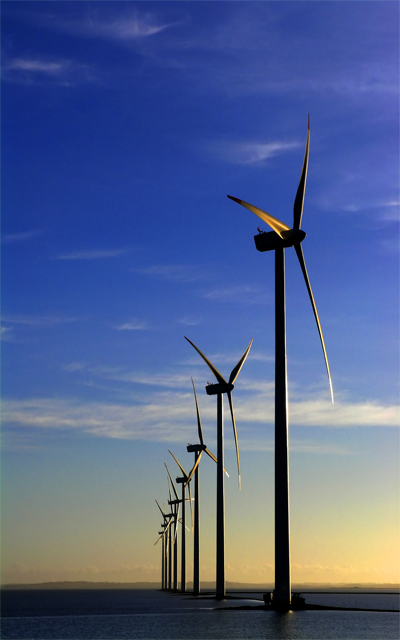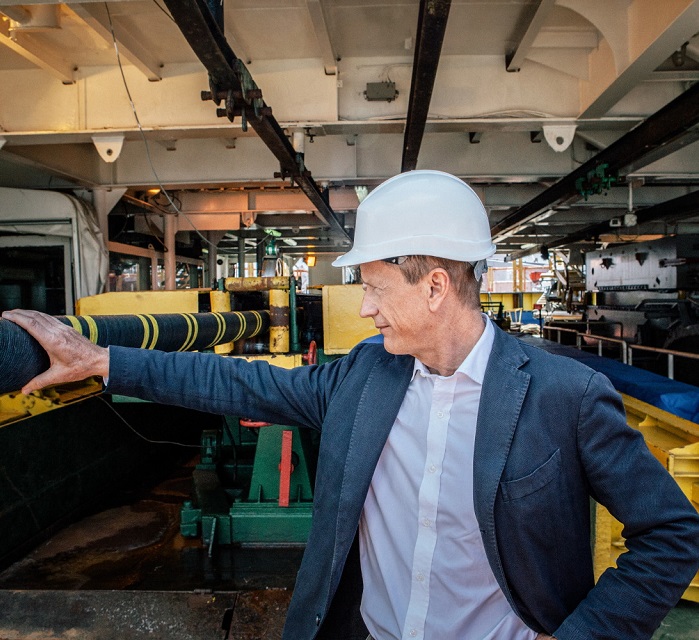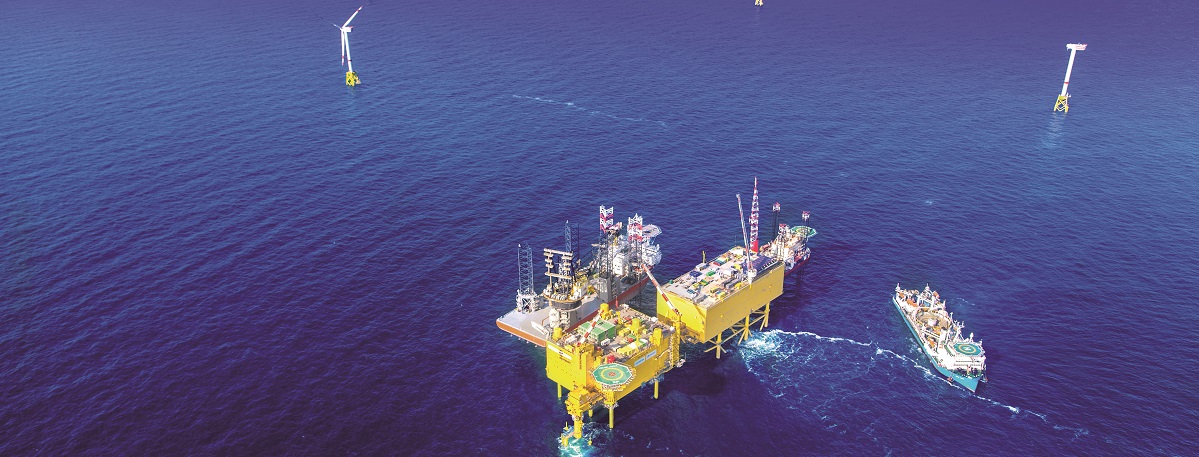However, it is not just a matter of size. In recent years, impressive developments have been achieved across the sector, from foundations and installation to the cables, as all these progresses are essential parts of the cost reduction process.
Milestone step forward for offshore wind

Year 2017 is marking history in the offshore wind industry, as in April three out of four winning bids in German auctions for projects coming on line in 2025 – totaling 1.38GW of new capacity – were for subsidy-free power.


This milestone can indeed be considered a breakthrough for the cost competitiveness of offshore wind farms, thanks to the stunning steps forward made by technology, that increased offshore wind credits among investors and Governments as a self-sustainable option to drive the shift to green energy systems.


Just looking to the size evolution of wind turbines in the last ten years could give a flavor of the dramatic growth of the industry: the 8MW over-160m diameter turbines used today have more than doubled the most common size used in 2007. Bigger installed capacity turbines make it possible to generate more power with fewer turbines, cutting costs of construction and maintenance. Since turbines account for the most of the expense of the total offshore wind projects, it is easy to understand why suppliers are looking to scale up the current turbine range up to 12-15MW.
Nowadays, the cabling industry believes a further progress in wind offshore cost-reduction could be achieved by the upcoming move to high-voltage (HV) inter-arrays and export lines.
And this growing trend is strictly connected to technological advancements, as Raul Gil, Chief Operating Officer of Prysmian’s Submarine Cable Business, explains: “Even if today the submarine cable infrastructure market is still hinging on 33 kV technology, it is clear that the industry is shifting towards 66 kV.” The 66 kV enables to transport two times more power than 33 kV over a single array cable, allowing to work with larger turbines and reduce the length of cables required, thus decreasing their production and installation costs. This ultimately means lower cost for utility companies and their consumers, as cable industry manufacturing and development set-ups make this technology more efficient and affordable. “Prysmian’s belief in the high-voltage future of offshore wind led it to develop a HV line — a three-core, 66 kV ‘wet-design’ cable system — that is expected to cut the cost of offshore wind inter-array networks by 15%,” Raul Gil adds.
Prysmian has a long-standing leadership and expertise in providing solutions to this industry, being a strategic business partner for the biggest TSO companies involved in the development of the offshore industry, as well as the most important developers. Among the several offshore wind farm subsea connections completed, the Group set a number of milestones in the industry: Borwin2 project (North Sea), the first 800 MW connection to offshore wind parks and the largest VSC system; Sylwin1, the highest-ever rated system for VSC technology with a power rating of 864MW operating at the highest commercially available voltage level of ±320 kV DC; and IFA2, a ±320 kV DC interconnection to connect Tourbe in France to Chilling in Hampshire, UK.
One of the most recent project secured by Prysmian is around €300 M contract from French TSO Réseau de Transport d’Électricité for the 220 kV HV export lines for the first three French offshore wind farms — Fécamp, Calvados and Saint-Nazaire. “These projects are even more challenging than others, being in open water, in the Atlantic Ocean, and involving very hard seabed conditions. But these sorts of projects make us stronger. When the projects are tough, we get more competitive,” adds Gil.
“Today, we have a 15% share in the market for offshore wind energy cables and systems and aim to increase this to 30-40% in the near future by leveraging the development of cable production and installation technologies"
“Today, we have a 15% share in the market for offshore wind energy cables and systems and aim to increase this to 30-40% in the near future by leveraging the development of cable production and installation technologies"

Massimo Battaini
Senior Vice President Energy Projects

In order to be prepared to support the offshore wind power revolution between 2012-2016, the Group invested around €200 M to create a world-class fleet of vessels, Cable Enterprise, Giulio Verne and Ulisse, able to lay cables at all water depths, while another €40 M had been allocated for retooling its production sites in Pikkala, Finland, Drammen, Norway, and Arco Felice, Italy, to handle the production of cables with voltages of up to 600 kV.
The Group is fully committed to growing further and strengthening its leadership also in this industry. Long-term growth perspectives in the industry led Prysmian Group to further strengthen its commitment with an ongoing investment in 2016-2017 of more than €60 million towards its production facilities and installation capabilities. The company also decided to upgrade its UK plant in Wrexham, Wales, to manufacture both 33kV and 66kV submarine cable cores, and to develop its offshore logistics hub in Middlesbrough, northeast England.




